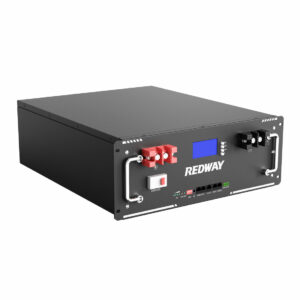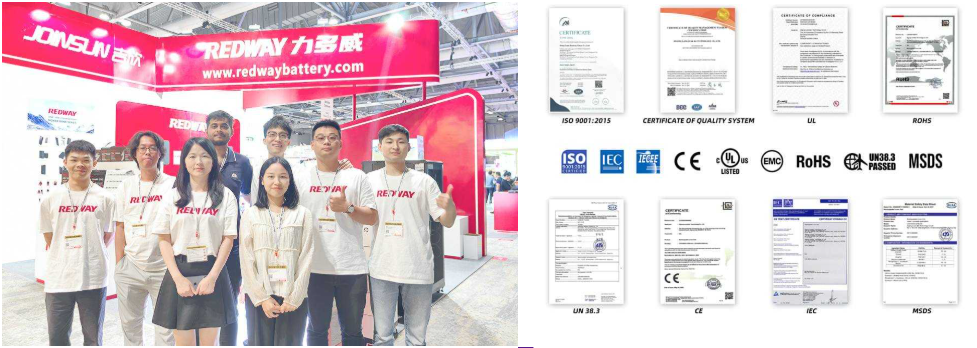Lead-Acid Telecom Batteries: Key Questions Answered
Lead-acid telecom batteries are rechargeable energy storage systems designed to power telecommunications infrastructure. They use lead dioxide and sponge lead electrodes submerged in sulfuric acid electrolyte. During discharge, chemical reactions generate electricity, while charging reverses the process. These batteries provide backup power during grid outages, ensuring uninterrupted communication networks.
How Do Lead-Acid Batteries Support Telecom Infrastructure?
Telecom networks require 24/7 power reliability. Valve-regulated lead-acid (VRLA) batteries maintain operations during blackouts by instantly supplying energy to cell towers, data centers, and transmission equipment. Their high surge current capacity supports sudden power demands, while their modular design allows scalable energy storage solutions for remote and urban telecom installations

Modern telecom installations utilize intelligent battery monitoring systems that track state-of-charge (SOC) and state-of-health (SOH) in real time. These systems automatically adjust charging parameters based on load requirements and environmental conditions. For example, in tropical regions where temperatures regularly exceed 35¡ãC, thermal management systems reduce charging voltage by 3mV/¡ãC per cell to prevent premature aging. The batteries’ ability to deliver 2-3 seconds of high-current bursts proves critical during generator start-up sequences, bridging the gap between power failure and backup system activation.
What Are the Key Advantages of Lead-Acid Batteries in Telecom?
Lead-acid batteries dominate telecom due to cost-effectiveness (40% cheaper than lithium-ion alternatives), proven safety record, and tolerance to wide temperature ranges. Their 8-12 year lifespan with proper maintenance and 80-90% depth of discharge capability make them ideal for frequent cycling applications. Unlike newer technologies, they require minimal specialized infrastructure for installation and recycling.
The inherent stability of lead-acid chemistry makes them less prone to thermal runaway compared to lithium-based systems. This characteristic becomes crucial in unmanned telecom shelters where fire risks must be minimized. Recent advancements include carbon-enhanced negative plates that reduce sulfation during partial-state charging, extending cycle life by 30% in demanding applications. Telecom operators particularly value the batteries’ end-of-life value – up to 98% of lead content gets recycled into new batteries, compared to 50-70% recovery rates for lithium-ion components.
| Feature | Lead-Acid | Lithium-Ion |
|---|---|---|
| Cost per kWh | $100-$300 | $400-$800 |
| Cycle Life | 500-1,200 | 2,000-5,000 |
| Operating Temp | -40¡ãC to 60¡ãC | 0¡ãC to 45¡ãC |
Which Maintenance Practices Extend Lead-Acid Battery Lifespan?
Monthly voltage checks, quarterly terminal cleaning, and annual capacity testing prevent premature failure. Maintaining electrolyte levels (in flooded types), keeping batteries at 20-25¡ãC, and avoiding chronic undercharging are critical. Equalization charges every 3-6 months balance cell voltages, while thermal monitoring systems prevent performance degradation from temperature fluctuations.
“The telecom sector will continue relying on lead-acid batteries for at least two more decades. Their recyclability aligns with ESG goals, and new gel-based designs eliminate spill risks. While lithium-ion grows in urban hubs, lead-acid remains unbeatable for remote tower sites where maintenance crews visit only quarterly.”
¨C Dr. Elena Voss, Power Systems Director, Global Telecom Alliance
News
AI-Powered Health Monitoring for Lead-Acid Telecom Batteries
The integration of AI-driven diagnostic tools like B2QScan with B1 Battery Testers has advanced in 2025, enabling real-time analysis of battery health, predictive maintenance alerts, and automated data sharing across telecom networks. This innovation reduces downtime and optimizes battery lifecycle management.
High-Capacity Sealed Lead-Acid Batteries for 5G Infrastructure
New 12V/240Ah sealed lead-acid batteries with compact designs (522x240x219mm) are being deployed in 5G telecom towers and data centers. These batteries prioritize energy density and longevity, supporting uninterrupted power supply (UPS) in high-demand environments.
Sustainable Recycling Breakthroughs for Telecom Battery Waste
Recent advancements in closed-loop recycling processes now recover over 98% of lead and electrolytes from spent telecom batteries. This aligns with global sustainability mandates, reducing environmental impact while lowering raw material costs for manufacturers.
FAQs
- How often should telecom batteries be replaced?
- Typical replacement cycles range from 5-8 years for VRLA batteries in high-usage environments to 12+ years for well-maintained flooded systems. Capacity dropping below 80% of rated output signals replacement need.
- Can lead-acid batteries integrate with solar-powered telecom towers?
- Yes, modern charge controllers enable seamless integration. Lead-acid handles solar’s intermittent charging better than lithium-ion in temperature-fluctuating environments, though oversizing by 30% compensates for lower round-trip efficiency (75-85% vs 95-98%).
- What safety certifications do telecom batteries require?
- UL 1973, IEC 60896-21/22, and Telcordia GR-63-CORE are mandatory. Fire-rated enclosures must meet ETSI EN 300 019-1-4 specifications, while seismic compliance requires Zone 4 earthquake resistance (0.4g lateral force capacity).
How to Maintain Lead-Acid Batteries in Telecom Infrastructure
Regularly inspect electrolyte levels and clean terminals to prevent corrosion. Perform monthly voltage and specific gravity tests. Maintain optimal temperature (20–25°C) and ensure adequate ventilation. Conduct equalization charging every 3–6 months. Replace batteries when capacity drops below 80%. Avoid overcharging and deep discharges. Use only distilled water for topping up. Monitor for swelling, leakage, or unusual heat.
How to Improve Telecom Backup Power Efficiency with Lead-Acid Batteries
Implement temperature-compensated charging and active cell balancing to optimize performance. Maintain depth of discharge above 50% to extend battery life. Integrate solar power to reduce cycling frequency. Schedule capacity testing every six months. Use high-efficiency rectifiers to reduce energy loss. Avoid extreme temperature fluctuations. Enable remote monitoring for real-time adjustments. Replace aging batteries promptly.
How to Extend Lifespan of Telecom Lead-Acid Batteries
Keep charge levels above 50% to prevent sulfation. Control internal temperatures using ventilation or cooling systems. Perform periodic equalization charging. Adjust float voltage based on ambient temperature. Replace corroded terminals immediately. Store batteries fully charged if unused. Follow proper cycling practices and avoid prolonged discharge conditions. Always use manufacturer-recommended chargers.
What Are Safety Standards for Telecom Lead-Acid Batteries
Follow IEEE 1187 for installation and UL 1973 for battery components. Use spill-proof containers and ensure vented enclosures. Maintain adequate spacing for airflow. Require PPE (gloves, goggles) during maintenance. Comply with NFPA 70E electrical safety standards. Conduct monthly inspections for leaks or physical damage. Train personnel in spill response and adhere to local fire codes.
What Is the Cost Analysis of Lead-Acid vs Lithium-Ion in Telecom
Lead-acid batteries typically cost $150–$300/kWh upfront and last 5–7 years. Lithium-ion options cost 2–3 times more but offer lifespans of over 10 years. Lithium-ion reduces long-term maintenance costs by 30–50% and offers higher efficiency, lowering energy expenses. While lead-acid is 98% recyclable, total cost of ownership favors lithium-ion for installations requiring more than 8 years of operation.



